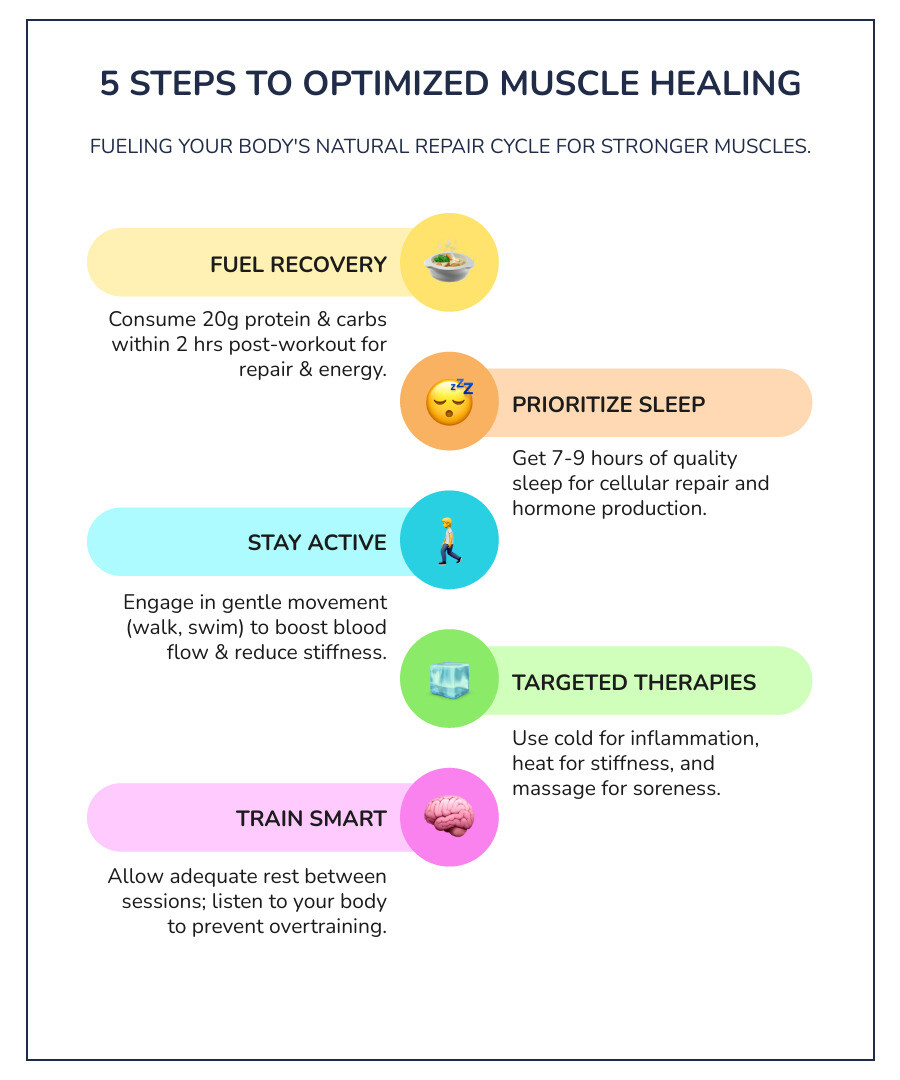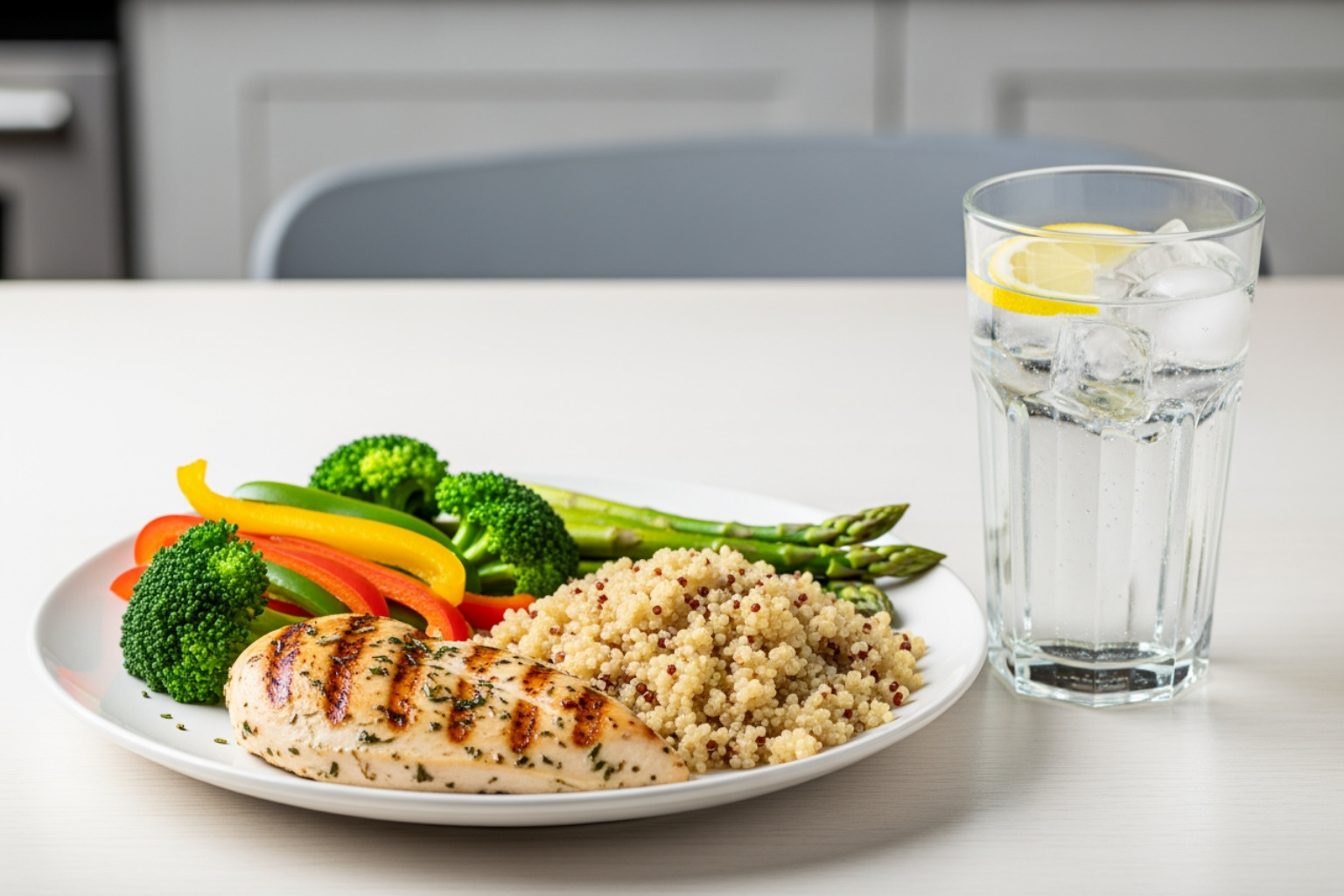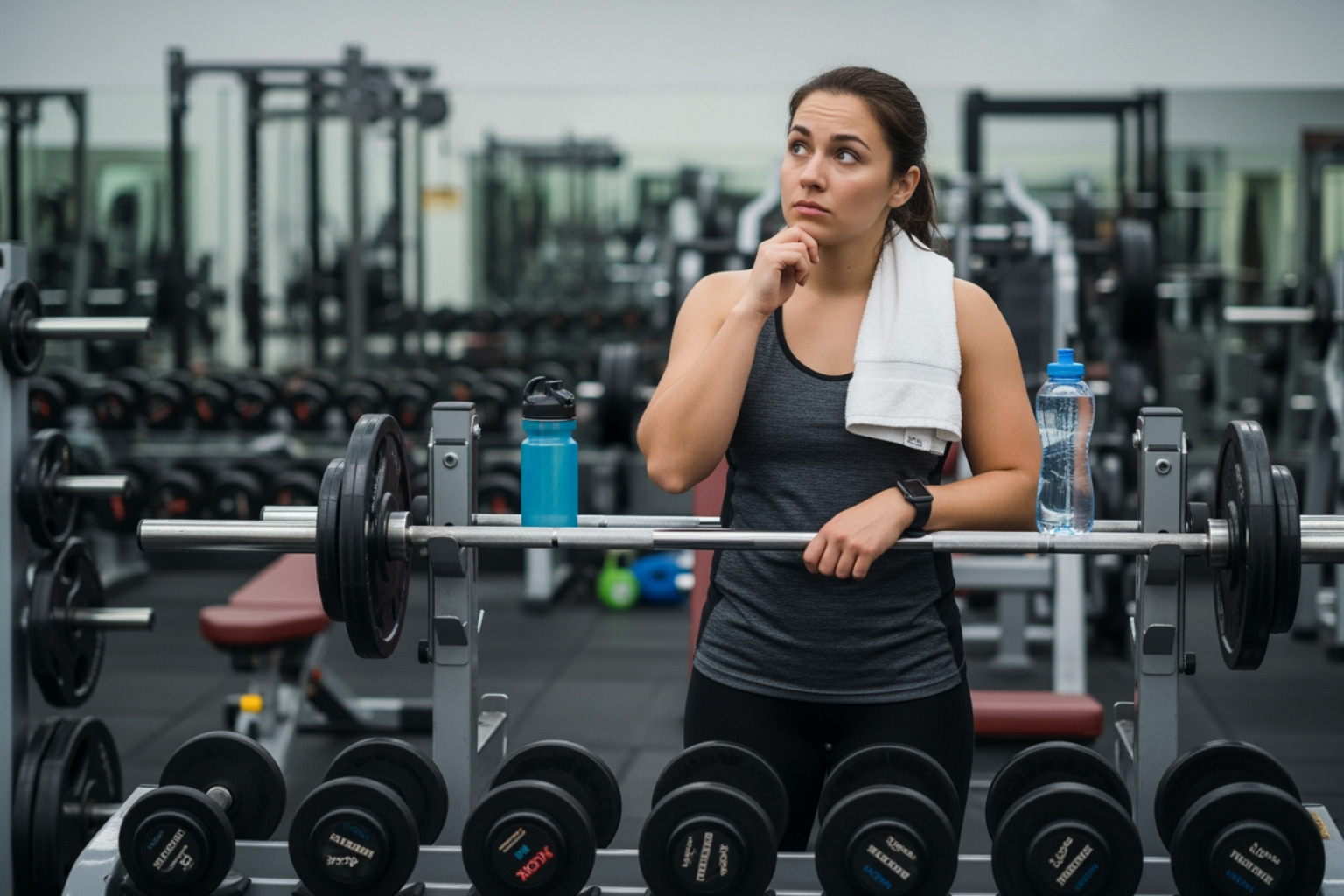Why Muscle Healing After Workout Matters for Your Performance
Muscle healing after workout is essential for building strength, preventing injury, and maintaining consistent training progress. When you exercise, your muscles develop microscopic tears. Proper recovery allows them to heal and grow back stronger.
Quick Answer: Optimize Muscle Healing in 5 Steps
- Fuel Recovery - Consume 20g of protein and carbohydrates within 2 hours post-workout.
- Prioritize Sleep - Get 7-9 hours of quality sleep for cellular repair.
- Stay Active - Use gentle movement like walking or swimming to increase blood flow.
- Apply Targeted Therapies - Use cold therapy for inflammation, heat for stiffness, and massage for soreness.
- Train Smart - Allow adequate rest between sessions and avoid overtraining.
The science is clear: what you do after your workout matters just as much as the workout itself. Without proper recovery, you risk Delayed Onset Muscle Soreness (DOMS), performance plateaus, or injuries that sideline your training.
The muscle repair cycle is simple: exercise creates micro-tears, your body responds with inflammation and nutrient delivery, and during rest, new muscle tissue forms. Your muscles don't grow in the gym—they grow during recovery. Neglecting this phase means interrupting your progress.
This guide provides accessible, science-backed solutions to support muscle healing after workout and help you achieve your fitness goals.

Step 1: Fuel Your Recovery with Smart Nutrition and Hydration

Proper nutrition and hydration are the foundation of muscle healing after workout. Intense exercise depletes your glycogen stores (fuel) and creates micro-tears in muscle fibers. To repair this damage and grow stronger, your body needs the right raw materials. Without them, recovery stalls, and dehydration can impair muscle repair. A successful recovery plan focuses on three key elements: protein for rebuilding, carbohydrates for refueling, and hydration for overall function.
The Role of Protein in Muscle Healing After Workout
Protein provides the amino acids necessary for muscle protein synthesis—the process of repairing and building muscle tissue. While timing isn't everything, consuming protein soon after your workout can jumpstart recovery. Aim for 20 grams of quality protein within an hour or two post-session to effectively kickstart muscle repair.
For overall daily needs, target approximately 1.6 grams of protein per kilogram of body weight, spread across your meals. For a 70 kg (154 lb) person, this is about 112 grams daily. Research on protein for muscle growth confirms this range supports both recovery and strength gains.
Good sources include fast-absorbing whey protein, slow-digesting casein, and plant-based soy protein. Studies show whey, soy, and casein powders are all effective. Whole foods like chicken, fish, eggs, Greek yogurt, beans, and lentils are also excellent choices.
Carbohydrates, Hydration, and Key Nutrients
Carbohydrates are your energy lifeline, and they replenish the muscle glycogen stores you drain during exercise. Pairing carbs with protein in your post-workout meal improves the insulin response, helping shuttle nutrients into muscle cells more efficiently.
Hydration is critical for muscle healing after workout. Water transports nutrients, regulates body temperature, and flushes out metabolic waste. As a general rule, drink 1.5 liters of fluid for every kilogram of body weight lost during your session (weigh yourself before and after to check). The USADA hydration guidelines stress that staying hydrated is an all-day job.
Don't forget electrolytes like sodium, potassium, and magnesium, which are lost in sweat and are essential for muscle function. An imbalance can lead to cramping.
Certain nutrients offer an extra recovery boost. Tart cherry juice is rich in anti-inflammatory compounds that may reduce muscle soreness. Creatine is known for boosting strength, but studies on creatine for recovery also show it can reduce muscle damage and speed up healing. Smart nutrition and hydration are foundational for faster healing and better performance.
Step 2: Prioritize Rest and Quality Sleep

After fueling your body, you must let it rest. Sleep is when the real magic of muscle healing after workout happens. It's your body's dedicated time to repair, rebuild, and strengthen.
During deep sleep, your body releases Human Growth Hormone (HGH), which is crucial for tissue repair and muscle growth. Sleep also acts as a natural anti-inflammatory, helping to reduce the lingering soreness and fatigue that can follow a tough workout. Without enough quality sleep, HGH production drops, and inflammation can persist, hindering recovery.
Research confirms that sleep deprivation impairs muscle recovery, leading to poor athletic performance and an increased risk of injury. Aim for 7-9 hours of quality sleep per night. Athletes in intense training may even need 10 or more hours.
To improve sleep, create a relaxing pre-bed routine. Keep your bedroom cool, dark, and quiet. Avoid screens for an hour before bed, as the blue light can disrupt sleep hormones. Prioritizing sleep isn't lazy—it's a strategic part of your training plan.
Step 3: Implement Active Recovery and Gentle Stretching

While it may seem counterintuitive, gentle movement is a powerful tool for muscle healing after workout. This is known as active recovery—light, low-intensity movement that promotes healing without adding stress.
Active recovery works by increasing blood flow to tired muscles. This improved circulation delivers fresh oxygen and nutrients while helping to clear away metabolic waste products like lactic acid, which contributes to stiffness and soreness.
Effective active recovery options include:
- Walking: A 20-30 minute brisk walk.
- Swimming: Low-impact and easy on the joints.
- Light Cycling: Keeps legs moving without high impact.
- Yoga or Pilates: Combines gentle movement with stretching.
Stretching is also beneficial, but timing is key. Use dynamic stretching (e.g., leg swings, arm circles) before workouts to warm up. Save static stretching (holding a stretch for 15-30 seconds) for after your workout or on recovery days to improve flexibility and ease tightness.
Always be gentle with post-workout stretching. Your muscles are fatigued and need care, not punishment. Listen to your body; the goal is to facilitate healing, not cause more stress. A little movement can make a big difference in how quickly you feel ready for your next session.
Step 4: Use Targeted Therapies for Improved Muscle Healing After Workout
Sometimes, nutrition and rest aren't enough. Targeted therapies can provide direct relief and accelerate the muscle healing after workout process. The most common question is whether to use ice or heat.
Cold therapy (ice packs, cold baths) causes vasoconstriction, narrowing blood vessels to reduce blood flow. This is highly effective for decreasing inflammation and swelling in the first 24-48 hours after an intense workout or acute injury. It also numbs pain receptors for immediate relief.
Heat therapy (heat packs, warm baths) does the opposite. It causes vasodilation, widening blood vessels to increase blood flow. This relaxes stiff muscles, promotes nutrient delivery, and helps remove waste. Heat is best for chronic soreness (DOMS) or general stiffness, typically after the initial 48-hour inflammatory phase.
| Therapy | Benefits | Best Use-Cases |
|---|---|---|
| Cold Therapy | Reduces blood flow, inflammation, and swelling; numbs pain. | Immediately after intense workouts or acute injury (first 24-48 hours). |
| Heat Therapy | Increases blood flow, relaxes muscles, reduces stiffness. | For chronic soreness (DOMS) or stiffness (after 48+ hours). |
The Power of Massage and Other Techniques
Massage is one of the most effective recovery methods. Research shows massage is the most powerful technique for DOMS, as it improves blood flow and reduces muscle tension.
- Foam rolling offers a form of self-massage, helping to release knots and improve flexibility.
- Compression garments apply pressure to improve circulation and may reduce muscle soreness, though a small study on compression garments shows results can vary.
- Cryotherapy, or short exposure to extreme cold, aims to reduce inflammation and pain. Research on cryotherapy effectiveness is ongoing but shows promise.
For targeted, localized relief, topical solutions are highly effective. Products like Neuropasil use ingredients like Aloe, Urea, and Menthol to provide soothing relief directly to sore areas. Athletes often use Neuropasil for muscle recovery to manage discomfort while their bodies heal.
Step 5: Train Smarter to Prevent Injury and Overtraining

Optimizing muscle healing after workout starts in the gym with smart training. Progress happens with consistency, not constant intensity. Your body adapts to stress, but it needs time. Pushing too hard, too fast leads to injury and burnout.
Ignoring the need for recovery can lead to overtraining syndrome—a state of chronic fatigue, declining performance, and frequent illness. It's your body's signal that it can't keep up. Inadequate recovery increases injury risk, making rest as crucial as the work itself.
Learning to listen to your body is a vital skill. On low-energy days, it's wise to opt for a lighter workout or an extra rest day. Incorporating deload weeks every 4-6 weeks—reducing training volume and intensity by 40-50%—allows for full recovery so you can come back stronger.
Key Principles for Smart Training
- Split Muscle Groups: Allow 48-72 hours of recovery for a muscle group before training it again. A simple upper/lower body split can be effective.
- Vary Intensity: Not every workout should be maximal. Mix heavy days with lighter days focused on volume or technique to manage stress and stimulate growth.
- Prioritize Form: Proper form prevents injury and ensures you're targeting the right muscles. Quality reps are always better than quantity.
- Track Progress: A simple training log helps you identify patterns between your training, recovery, and performance. This data is invaluable for making smart adjustments.
- Differentiate Pain: Learn the difference between the normal burn of muscle fatigue and the sharp, stabbing pain that signals an injury. Never push through joint pain or pain that worsens.
When you experience normal muscle soreness, targeted relief can help you stay comfortable. Topical solutions like Neuropasil can soothe sore muscles, supporting your recovery routine so you can train smarter for the long haul.
Frequently Asked Questions about Muscle Healing
Here are answers to common questions about muscle healing after workout.
How long does muscle recovery typically take?
There's no single answer, as recovery time depends on workout intensity, your fitness level, and the type of exercise. Delayed Onset Muscle Soreness (DOMS) usually appears 12-48 hours after a workout and peaks between 24-72 hours. Eccentric exercises, like running downhill, often cause more soreness. For most, mild to moderate DOMS fades within 3-5 days. If pain is sharp or lasts longer, consult a healthcare professional.
What are the best immediate post-workout steps for recovery?
What you do right after your workout can significantly impact recovery. Follow these steps:
- Cool-Down: Spend 5-10 minutes on light cardio (walking, easy cycling) to gradually lower your heart rate.
- Gentle Stretching: Hold static stretches for 20-30 seconds for the muscles you just worked.
- Rehydrate: Start sipping water or an electrolyte drink immediately to replenish lost fluids.
- Refuel: Within 30-60 minutes, consume a snack or meal with both protein and carbohydrates to kickstart muscle repair and replenish glycogen. For added relief, a topical cream like Neuropasil can soothe immediate muscle aches.
Can I work out with sore muscles?
Yes, you can often work out with mild to moderate muscle soreness. It's important to distinguish between the dull ache of DOMS ("good pain") and sharp, shooting, or joint pain ("bad pain"). Never train through bad pain.
Active recovery, such as walking or swimming, can actually help alleviate DOMS by increasing blood flow. Another effective strategy is to train different muscle groups. If your legs are sore, focus on an upper-body workout. However, if you feel extreme fatigue or widespread soreness, a full rest day is the smartest choice. Pushing through severe soreness can hinder muscle healing after workout and increase injury risk.
Conclusion: Your Path to Faster, More Effective Recovery
You now have the five essential steps to optimize muscle healing after workout: smart nutrition, quality sleep, active recovery, targeted therapies, and intelligent training. The workout creates the opportunity for growth; recovery makes it a reality.
Consistency is your greatest asset. You don't have to be perfect, but making recovery a non-negotiable part of your routine will transform your results. Progress is about showing up for yourself again and again.
Listening to your body is the most valuable skill you can develop. Your energy levels, soreness, and performance are all forms of feedback. When your body asks for rest, listen before it's forced to shout through injury or burnout. Create a personalized recovery plan that fits your unique needs and schedule.
For moments of particular muscle ache or stiffness, targeted relief can make a significant difference. For soothing relief from muscle aches, consider a topical cream like Neuropasil to complement your recovery routine. Its natural formulation provides fast-acting comfort right where you need it. Discover our natural pain relief solutions and see how they can support your journey to stronger, healthier movement.
Every recovery session is an investment in your future performance. You're not just healing from yesterday's workout—you're building the foundation for tomorrow's progress.
References
Every claim we've made about muscle healing after workout is backed by solid science. We believe in transparency and empowering you with credible information, so here are the sources that informed this article:
Al-Bashaireh AM, et al. (2018). The effect of tobacco smoking on musculoskeletal health: A systematic review. https://www.hindawi.com/journals/jeph/2018/4184190/
Cleveland Clinic. (n.d.) Dehydration. https://my.clevelandclinic.org/health/treatments/9013-dehydration
Dáttilo M, et al. (2020). Effects of sleep deprivation on acute skeletal muscle recovery after exercise. https://journals.lww.com/acsm-msse/fulltext/2020/02000/effectsofsleepdeprivationonacuteskeletal.28.aspx
Dupuy O, et al. (2018). An Evidence-Based Approach for Choosing Post-exercise Recovery Techniques to Reduce Markers of Muscle Damage, Soreness, Fatigue, and Inflammation: A Systematic Review With Meta-Analysis. https://www.frontiersin.org/articles/10.3389/fphys.2018.00403/full
Frontiers in Physiology. (2017). Research on cryotherapy effectiveness. https://www.frontiersin.org/articles/10.3389/fphys.2017.00258/full
Jäger R, et al. (2017). International society of sports nutrition position stand: protein and exercise. https://jissn.biomedcentral.com/articles/10.1186/s12970-017-0177-8
Lakićević N, et al. (2019). The effects of alcohol consumption on recovery following resistance exercise: A systematic review. https://www.ncbi.nlm.nih.gov/pmc/articles/PMC7739274/
Morton RW, et al. (2017). A systematic review, meta-analysis and meta-regression of the effect of protein supplementation on resistance training-induced gains in muscle mass and strength in healthy adults. https://www.ncbi.nlm.nih.gov/pmc/articles/PMC5867436/
National Center for Biotechnology Information (NCBI). (n.d.) Small study on compression garments. https://www.ncbi.nlm.nih.gov/pmc/articles/PMC6341249/
National Center for Biotechnology Information (NCBI). (n.d.) Studies on creatine for recovery. https://www.ncbi.nlm.nih.gov/pmc/articles/PMC8228369/
National Center for Biotechnology Information (NCBI). (n.d.) Whey, soy, and casein powders. https://www.ncbi.nlm.nih.gov/pmc/articles/PMC7312446/
PubMed. (n.d.) Massage is the most powerful technique for DOMS. https://pubmed.ncbi.nlm.nih.gov/29755363/
Rodrigues F, et al. (2023). The association between training frequency, symptoms of overtraining and injuries in young men soccer players. https://www.ncbi.nlm.nih.gov/pmc/articles/PMC10138529/
US Anti-Doping Agency. (n.d.) Fluids and hydration. https://www.usada.org/athletes/substances/nutrition/fluids-and-hydration/
These resources represent peer-reviewed research and trusted health organizations. We encourage you to explore them if you want to dive deeper into the science behind effective recovery strategies.













